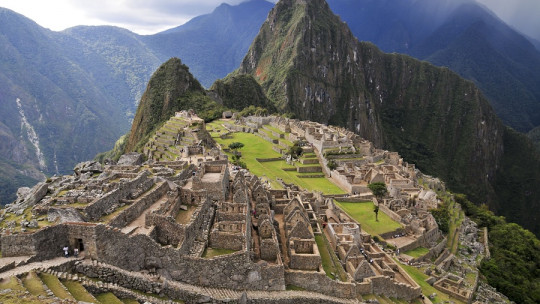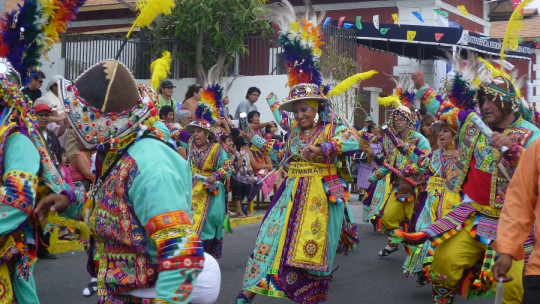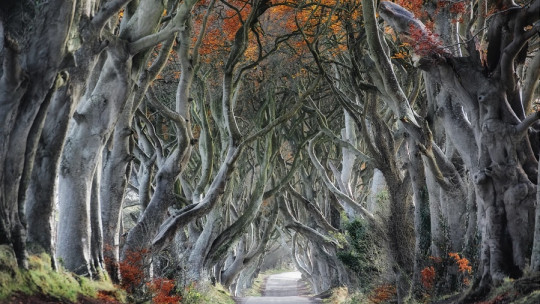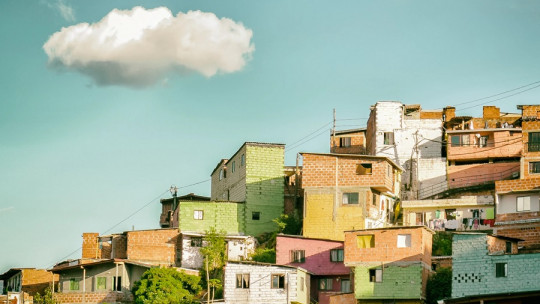
Venezuela, officially known as the Bolivarian Republic of Venezuela, is a country located in the north of South America that enjoys a rich history and natural wealth.
Although it has recently been experiencing turbulent times, it is a town that has its own culture and tradition, with multiple legends that descend from the different peoples that have inhabited the country since pre-Columbian stages. In order to understand part of its idiosyncrasy, in this article we are going to see some of the best-known Venezuelan legends
10 very interesting Venezuelan Legends
Below we show you a dozen Venezuelan legends, which tell us about themes such as the emergence of geographical elements such as some of the best-known peaks in the country, clouds, tradition and its rupture, love or jealousy. Some of them are typical of indigenous peoples, while others are from their mixture with the Catholic tradition
1. Caribay and the five white eagles
“Many years ago, the first of the mirripuy women, Caribay, was born. Daughter of the Sun, Zuhé, and the Moon, Chía, had one of the most beautiful voices in the world and was capable of imitating any bird. One day the young Caribay, who enjoyed contemplating and admiring the forest and nature, saw five large white eagles with beautiful plumage in the sky.
Wishing to contemplate their beauty and even adorn themselves with their feathers, he followed them. He chased the birds up the mountains, to the highest cliffs, but he could follow them no further. Saddened, she sang invoking Chía, making the night come and light up the earth. Caribay’s sad song impressed the animals including the five eagles which descended until each one rested motionless on a cliff.
Caribay then approached the nearest cliff, where he tried to touch the first of the eagles. However, when he put his hand closer he realized that the birds had frozen. Guilty and scared, she Caribay fled. As she fled, Chía became dark, causing the ice covering the eagles to melt. They woke up again, furious, shaking and scattering their white feathers.
The birds shook again and again, filling the place with white. Their wings caused a cold breeze, and their squawks spread through the echo. The young Caribay took refuge, but once she stopped hearing the birds she calmed down and she could see how each of the five peaks had been covered in white.”
This beautiful legend tells us about the origin of snow in the Venezuelan peaks, as well as the squawking of the wind and the cold winds typical of the mountain tops. Caribay’s song also reminds us of the whistle of the wind, the element it represents.
2. The Sayona
“A long time ago there was a young woman who lived with her husband, with whom she had recently had a baby. The young woman had the habit of bathing in the river, but she was often spied on by a man from the town. One day she discovered the voyeur and asked him what she was doing. The man, who had been surprised, She chose to lie to him, telling him that she was there to announce that her husband was unfaithful to her with another woman
During the night, when the family was already home, the husband whispered his mother’s name in his sleep. The woman, jealous and assuming that her own mother was her husband’s lover, set fire to the house, killing the husband and the baby. Immediately afterwards, with a knife in her hand, the young woman went to her mother’s house. After claiming infidelity that her mother denied, she stabbed her to death.
The mother, with her last breath, told her that she had never been her husband’s lover and He cursed her for the crimes she had committed Since then, the sayona wanders eternally, chasing unfaithful men who fall into her attempts at seduction and destroy them.
One of the country’s best-known horror legends, the sayona (whose name comes from the garment she wore, a tunic) or the woman from the plain tells us about mistrust and jealousy, as well as the need to respect and care for mothers. It is said that the figure of the sayona seduces men with her beauty and then takes them to the plain. There she takes on her true form, with huge, sharp fangs and claws and blood-colored eyes, often causing death or madness.
3. Maria Lionza
“Many years ago, at the time of the Spanish conquest, one of the leaders of the Caquetío Indians had a light-eyed daughter with a white woman. According to the beliefs of his village and the tribe’s shaman, the light-eyed girl had to be sacrificed to the anaconda god or he would bring misfortune to her people. The girl’s father refused to sacrifice her and opted to lock her in a hut with 22 warriors protecting her and taking care of keeping her at home.
Years passed and the girl became a woman. One day, even though it was noon, all the guards fell asleep, at which point the young woman took the opportunity to go to the river. There she was able to contemplate her reflection for the first time. But the great god Anaconda, lord of the river, also saw her, who fell in love with her little girl and ate her, wanting her for himself.
The father and the people wanted to punish the spirit, but it began to swell until it caused the waters of the river to overflow, causing a great flood. The tribe disappeared.
After the event and as it continued to expand, the serpent burst, letting the young woman, Maria Lionza (also known as Yara), emerge again. But she did not come out as a mortal, but rather she became a goddess and protector of waters, fish, nature and love.”
Yara is an ancient protective goddess of the indigenous people of Venezuela and other countries in South America that is linked to the protection of nature, love and peace. The arrival of Catholicism changed her name to María Lionza (María de la Onza del Prado de Talavera de Nivar), being a cult that is still valid and widespread in part of the country.
4. The Lost Axeman
“Once upon a time there was a woodcutter who wanted to work on his own coffin, for which he decided to go look for wood in the mountains. However, he made the decision to go on Good Friday. At the same moment he raised the ax to cut down the first tree, God struck him down. The axetter was condemned from then on to wander eternally in the forests, attacking those hunters who entered them.”
This horror legend from Venezuela It tries to push on the one hand to respect traditions, while on the other it is a reminder of the dangers of the forest especially at night.
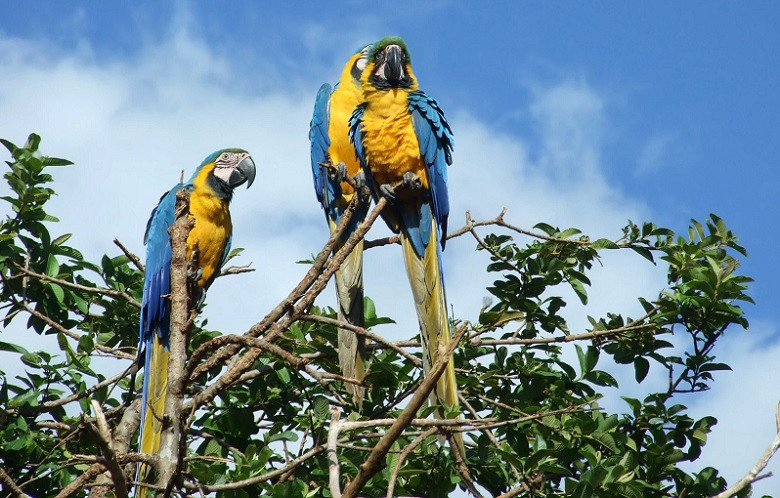
5. The mule woman
“Once upon a time there was a young woman who worked in a restaurant in Caracas. One day, the girl’s mother, an elderly woman, came to the restaurant to order a plate of food. Her own daughter denied her the dish and subsequently expelled her from the premises.
Once outside, hurt, the old woman He met a man who gave him a coin with a St. Andrew’s cross The man instructed her to go back to the restaurant and eat with that money, but when her daughter handed it over she told him that she should keep the change to buy malojo.
The old woman did what the man told her, something that caused the daughter who had expelled her to partially transform into a mule, neighing and kicking until he fled the scene. Since then the mule woman covers herself with a white cloak and appears in churches, praying.”
A Venezuelan legend that tells us about the price and punishment of ingratitude as well as the return of evils done to others.
6. Guaraira Repano
“In ancient times, the mountain today known as Ávila did not exist, living the towns of the Caracas valley on a plane that allowed you to see even the sea. However, as time passed, the actions of the citizens of the valley towards the spirits of nature offended the Goddess of the sea. This one, furious, summoned a great wave that devoured and destroyed everything in its path, throwing it against the earth.
Terrified, all the citizens knelt and begged for forgiveness. When they looked up, they saw that just as the great wave began to descend upon them he had transformed into stone: the goddess had taken pity on their supplications and had transformed the water into the Ávila, formerly known as Guaraira Repano (approximately “the wave that came from afar”).”
This ancient legend tells us the myth of how the mountain in whose valley Caracas is located was formed, a gesture of compassion on the part of a deity and a reminder of the need to respect nature.
7. Doctor Knoche and his mummies
“Legend has it that Dr. Knoche traveled from Germany to Venezuela to settle, building the Buena Vista farm in La Guaira. This doctor, who was present at the time of the Federal War, invented a formula that allowed corpses to be embalmed without having to remove their organs. He took the bodies of those that no one claimed to his farm to experiment on them achieving his first success with the soldier José Pérez, whose mummy he would place in uniform at the entrance of the house.
The doctor, along with his family and employees, would work in a mausoleum that would later house them when they died, and throughout his investigations he guarded each of the mummies he obtained.
Rumors say that in the beginning he also worked with dying people. In fact, it is said that one night, one of the doctor’s corpses broke free from his restraints, climbed onto a horse and fled, rolling down the mountain and never appearing again. The doctor himself prepared a dose to be administered to himself, as well as one for the only one of the nurses who survived him. Some say that it was administered against his will.”
This legend is, in reality, a story largely based on real events Gottfried Knoche was a German doctor who lived and worked as a doctor in Venezuela at the time of the federal war, being known for being a very humane and charitable doctor who did not even charge for his services. However, he also became famous for inventing and working on a chemical formula that would preserve corpses from decomposition.
For it He experimented with the corpses of unclaimed soldiers, having them taken to his hacienda in Galipán, where he was successful in his endeavor, mummifying various bodies by injecting them with a specific formula (the exact composition of which was lost with his death). It is also real that he created a mausoleum (in fact, his estate is today a museum) and that he guarded most of the mummies, including that of soldier Pérez. For this reason, some of the surrounding citizens even considered him a vampire and insinuated that he worked with still-living subjects.
8. The soul alone
“Legend says that there is a soul in pain known as the anima sola, which wanders eternally, being condemned to suffer the heat and thirst of the flames of Purgatory. In life it belonged to Celestina Abdenago, who was condemned by God for refusing to give water to Jesus Christ despite being in charge of giving water to those condemned to the cross. Although she gave it to Dimas and Gestas, she denied it to Jesus because of fear of the Jews who condemned him.”
This legend, which in other versions says that the woman gave vinegar to Jesus when he asked for water while carrying the cross or that it is a woman who died during the war of independence, allows us to see the importance given to the religious sphere in that country Her beliefs regarding her may vary: there are versions that believe she is a spirit seeking redemption and others that she is a malicious being, capable of both good and evil.
9. The owner of the fire
“Legend says that Baba, the king of the alligators, lived near the source of the Orinoco River. This king, along with his wife, his frog, had a great secret kept in his throat: fire. The couple lived in a cave where no one could enter under threat of losing their lives except them, the kings of the waters. But one day the partridge entered the cave by mistake, finding charred caterpillars. She tried them and they loved the taste, and after that she ran to tell the hummingbird and the booby bird. The three of them hatched a plan to discover how the alligator and the frog managed to cook the caterpillars
The silly bird entered the cave and hid, unseen as it had dark plumage, and could see flames coming out of the alligator’s mouth that cooked the caterpillars that the frog was carrying. Once they were both asleep, the silly bird was able to come out and explain what happened.
The three birds decided to steal the fire, choosing to make him laugh when all the animals came to drink from the river. The silly bird and the partridge took the opportunity to do pirouettes to make everyone laugh, but King Baba did not do it. The silly bird took advantage of the frog queen’s laughter to throw a ball at her, causing it to lodge in her jaw. Seeing his problems, the alligator began to laugh. The hummingbird took advantage of the moment to dive and steal the fire with its wings. But when he rose he set fire to a tree.
The alligator and the frog expressed that even if they had stolen the fire, it would be used by others and the rest of the animals would be burned to death, although the two of them would be immortal in the river. After that they submerged and disappeared. The birds and animals tried to use it, but they didn’t know how. However, humans did learn to use it to cook and provide heat, light and security, and they began to venerate the three birds for having allowed them to do so.”
A brief legend in the form of a fable that nevertheless lets us see the prominent role given in ancient times to the crocodile and birds in indigenous mythology It also establishes an origin for learning the use of fire, curiously similar to the Greek one.
10. The eternal tears of Carú
“Legend says that at the time of the Spanish conquest, Princess Carú of the dancers tribe was going to marry the son of the chief of the Mocotís The girl was looking forward to the wedding, as the time for the ceremony was approaching. However, shortly before this, the lookouts shouted that strange entities dressed in iron and riding beasts were approaching. The tribes prepared for combat, as did the strange newcomers. What should have been a moment of joy turned into an all-out conflict with a large number of deaths. Among them, Carú’s fiancé, who fell in combat.
The young woman, broken with pain, hugged the body of her lover. No doubt the mountain god of life would bring her life back to him. Thus She carried the body of her fiance to take it to the summit, where the deity lived, to ask him to bring the body back to life that she carried with her. On the third day of the trip, young Carú couldn’t take it anymore and she lost her strength: hugging her lover, she cried for her, she fell asleep and finally died.
Moved, the mountain god collected Carú’s tears and threw them into space so that all the inhabitants of the area could see and remember Carú, his love and his suffering. This is the origin of the Bailadores waterfall.”
A beautiful but sad legend that tells us about the order of the Bailadores waterfall, in the Parque de la Cascada de la India Carú, in Mérida. It also tells us about love, suffering and sacrifice for those we care about.


